
The Nuremberg Trials Memorial (Memorial Nuremberg Trials, German name: Memorial Nürnberger Prozesse) is a museum of the history of the Nuremberg Trials, located in the Palace of Justice in Nuremberg, in the room where the trials of leading representatives of the National Socialist regime took place.
The museum includes Hall 600, where the trials took place, and a permanent exhibition.
In addition to the beautiful historical center and museums, the city of Nuremberg is also famous for the fact that the Nuremberg trials of prominent representatives of the political, military, judicial and economic leadership of Nazi Germany who planned, committed or otherwise participated in the Holocaust and other war crimes took place in the Nuremberg Palace of Justice (Justizpalast) in 1945-1949.
The first and most famous of the trials was the trial of the main war criminals before the International Military Tribunal (IMT). Sir Norman Birkett, one of the British judges present at the trial, called it "the greatest trial in history." It was these processes and their decisions that marked a turning point between classical and modern international law, and also partly determined the state of international criminal law.
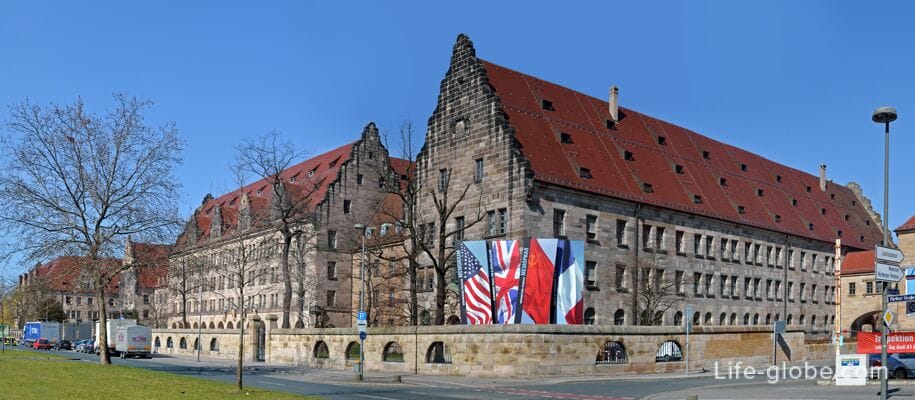
From November 20, 1945 to October 1, 1946, Nuremberg hosted the main trial of war criminals at the International Military Tribunal - 21 representatives of the elite of the National Socialist regime, brought to justice for their crimes against peace and humanity. Thanks to this trial, the jury of the Nuremberg Palace of Justice gained worldwide fame. From 1946 to 1949, twelve "subsequent trials" took place in the same place.
After the processes were completed, the building remained in American use and gradually returned over the next 20 years. The courtroom was officially handed over to the Bavarian judicial authorities on June 30, 1961. In the same year, extensive construction work was carried out, as a result of which American conversions were canceled, and furniture was also replaced. Since then, the hall in which the trials took place has again become a place of German jurisdiction.
In May 2000, the Nuremberg Museums offered public tours of the historic conference hall on weekends.
In 2010, in the room where the court sessions were held, namely in the hall number 600 (Schwurgerichtssaal 600) was openedMuseum of the History of the Nuremberg Trials. Now the hall is not used for court sessions and has a slightly different appearance from the one in which the trials took place, but it is, if possible, close to the historical one.
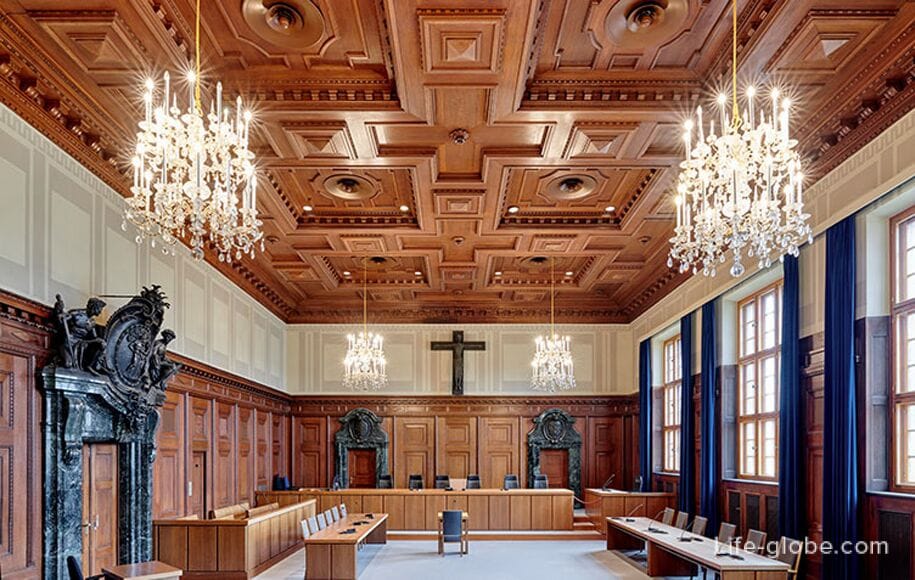

In addition to Hall 600, the museum also has a permanent exhibition "Nuremberg Trial Memorial", which provides information about the history, participants, the course and consequences of the trial, the prosecution of Nazi crimes after 1946; and some objects, such as parts of the original dock and historical audio and film documents, give a "live" idea of what happened.
Part of the exhibition is devoted to the legacy of Nuremberg - the principles formulated by the International Tribunal, which served as the basis for the creation of the International Criminal Court in The Hague.
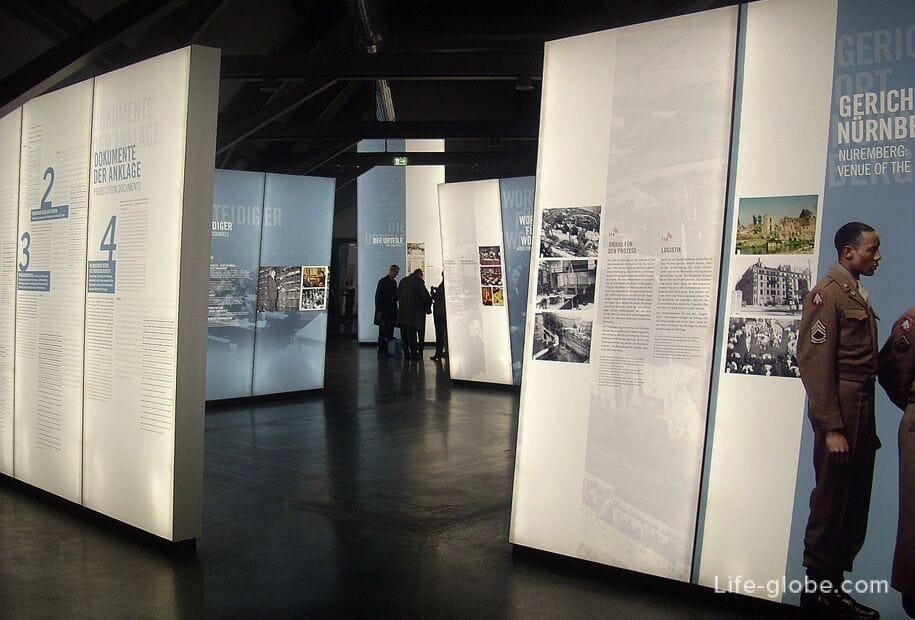
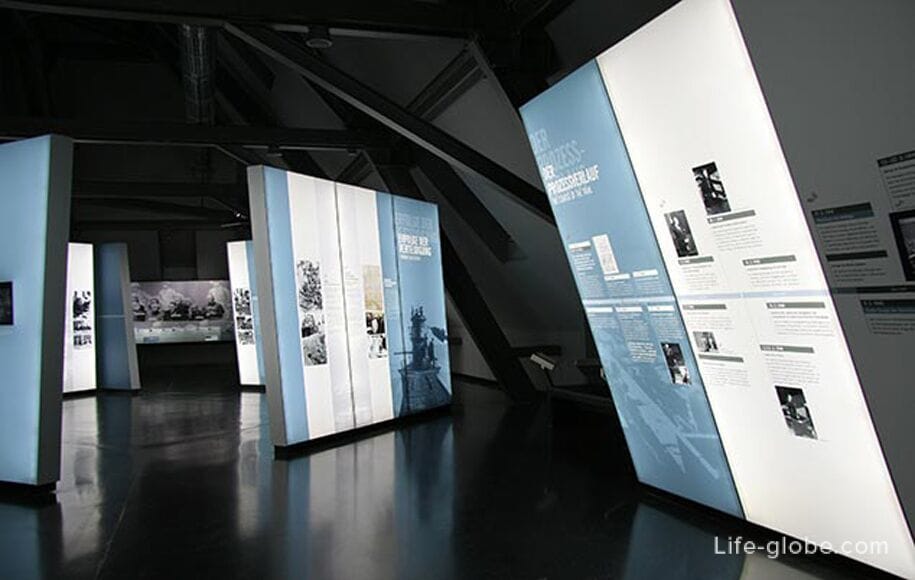
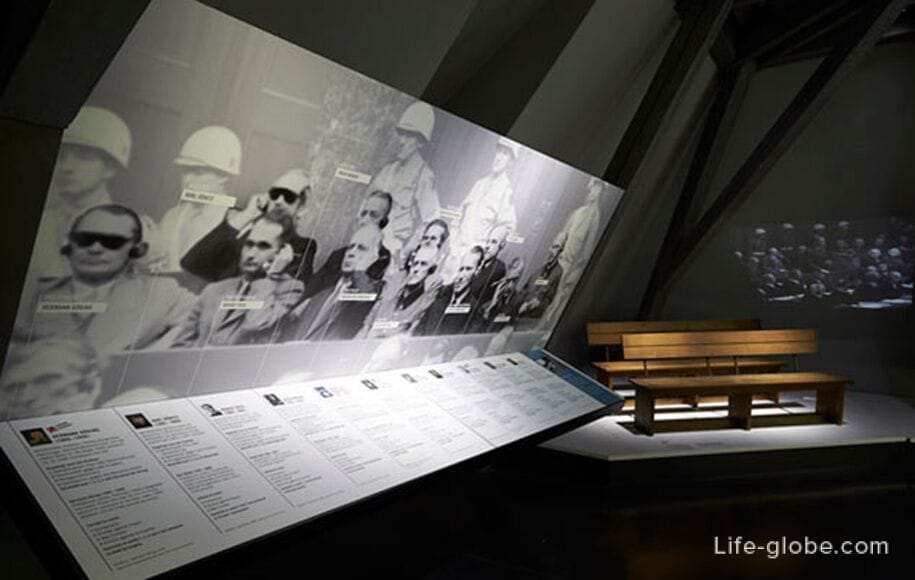
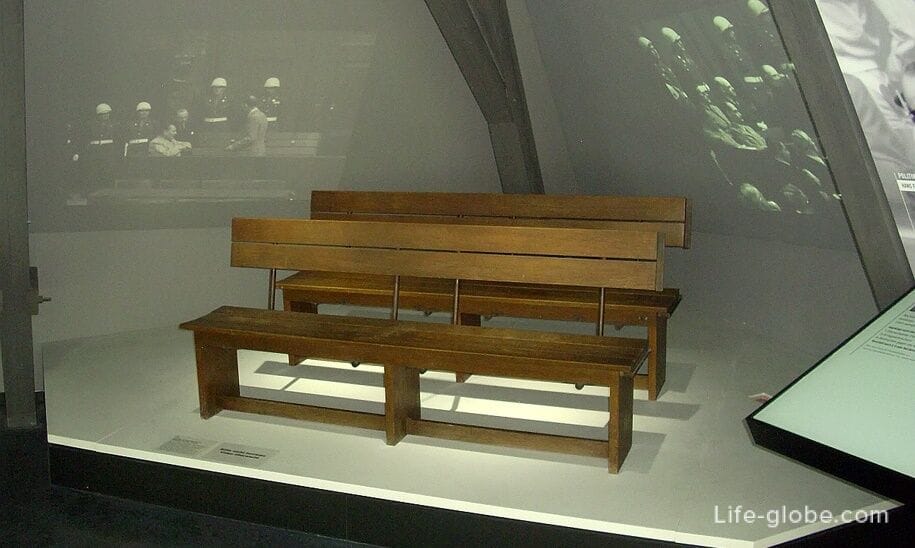
The choice of Nuremberg as the venue for the trials was influenced by various aspects.
First, it was necessary to find a political agreement between the United States and the Soviet Union, which called for a trial in their zone of occupation. The permanent seat of the Special International Military Tribunal was established in Berlin under the chairmanship of the Soviet Union. However, the first of several originally planned procedures was to be carried out in the American zone of occupation, for which it was necessary to find a suitable place.
The decision taken by the Allies at the London Conference in August 1945 was primarily due to infrastructural reasons. Barely damaged during the Second World War, the Palace of Justice on the Furterstrasse in Nuremberg had enough space for numerous personnel from four countries. As well as the prison directly adjacent to the north, it facilitated the placement and protection of prisoners. The historical role of Nuremberg as the "city of Nazi Party rallies" and the place of proclamation of "racial laws" was not decisive for the choice of the place of jurisdiction, but gave it a special symbolic meaning.
The wooden corridor connecting the prison cell and the eastern building was built specifically for the trial, which allowed prisoners to be safely transferred from the cell directly to the courtroom. In addition, the area around the complex was carefully guarded.
Address of the Nuremberg Trial History Museum: Bärenschanzstraße 72, 90429 Nürnberg.
Building coordinates: 49°27'16.0"N 11°02'47.0"E (49.454444, 11.046389).
Entrance to the museum is paid. There are audio guides in many languages.
The Museum of the History of the Nuremberg Process is part of the Association of Museums of the city of Nuremberg (Museen der Stadt Nürnberg).
The museum's opening hours, ticket prices, information about Hall 600, expositions and conditions for visiting the museum, we recommend checking on the museum's website: memorial-nuernberger-prozesse.
All accommodation facilities in Nuremberg, including in the city center and more remotely from it, can be viewed and booked here